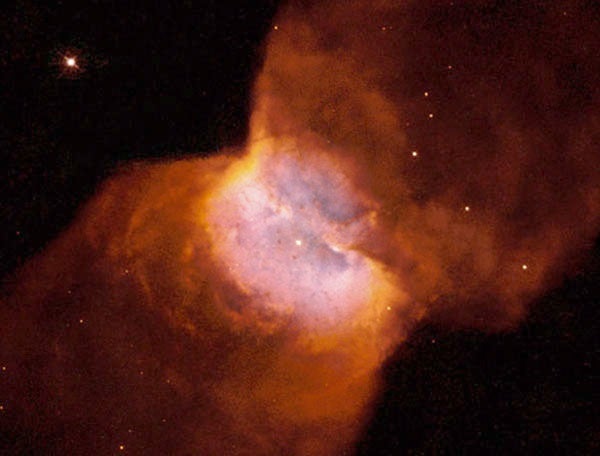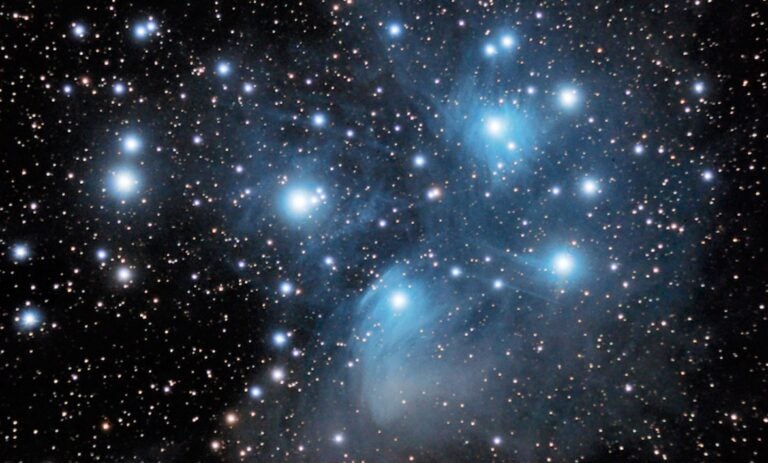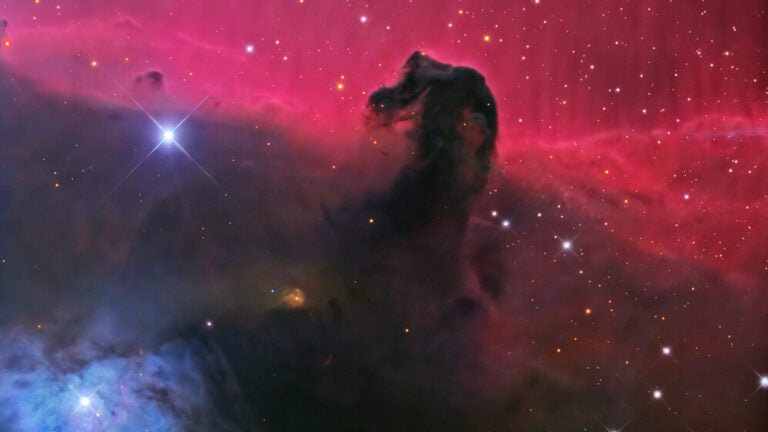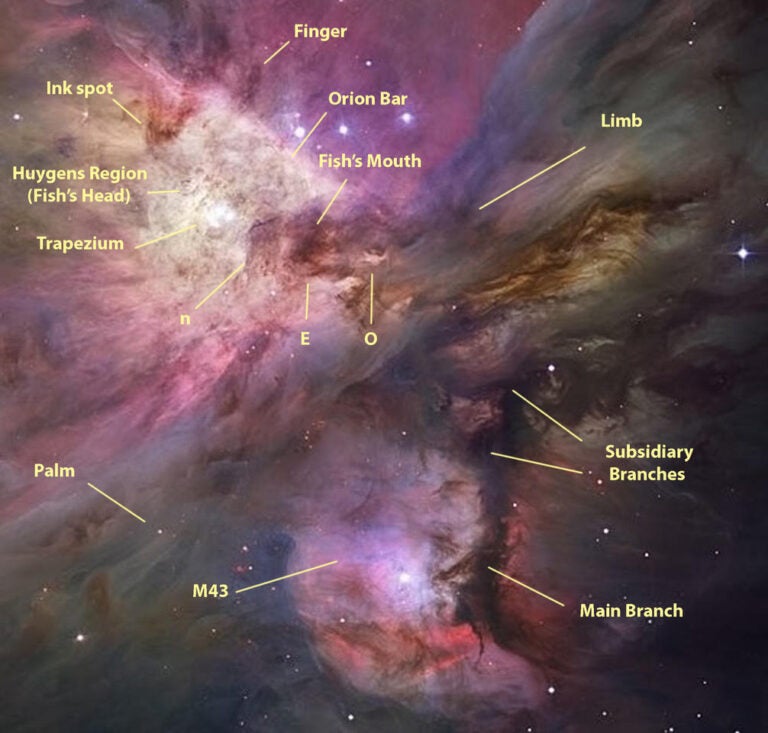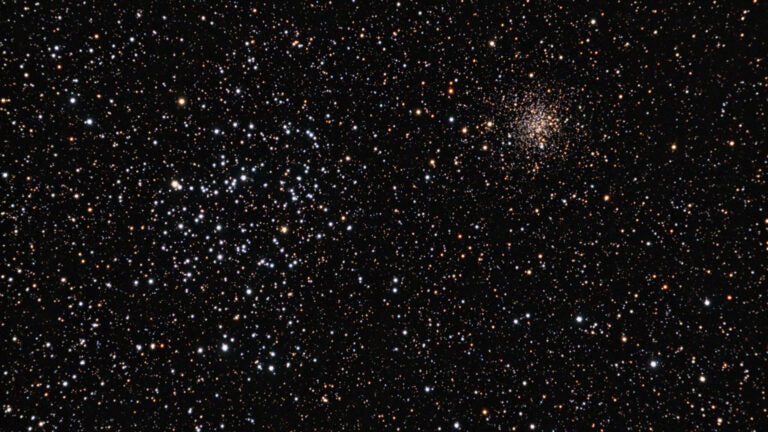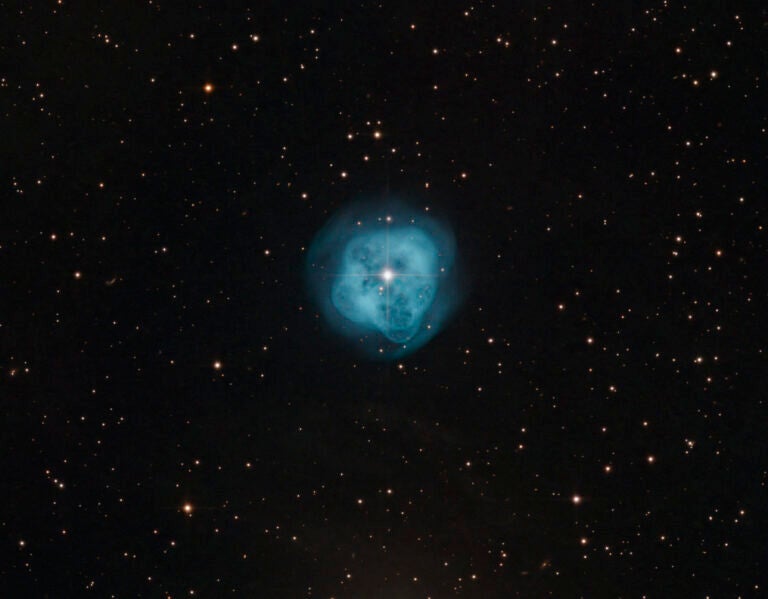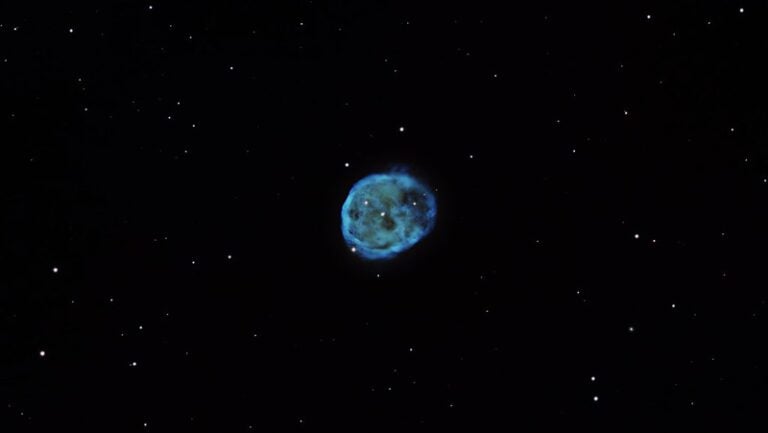When Nova Delphini 2013 emerged last August, I pondered the curious illusion of its stellar appearance. What we see as a “new star” actually is an enormous shell of hydrogen gas exploding off the surface of a white dwarf star in a close binary system. The nova’s shell appears stellar because it lies at a great distance — in this case some 11,400 to 17,900 light-years from Earth. Sometimes, when a nova cools and fades, major observatories are able to image its structure — rings and shells that look much like those displayed by planetary nebulae.
While we cannot see a nova’s shell through our backyard telescopes, we can see some distant planetary nebulae with similar features. The area within the asterism the Winter Hexagon — Sirius, Procyon, Pollux and Castor, Capella, Aldebaran, and Rigel — contains three tiny planetary nebulae within the range of a 4-inch telescope. Each of these fuzzy objects presents its own set of challenges.
IC 2165
(6h22m; –12°59′)
The smallest of the bunch, IC 2165, lies in Canis Major, about 7° west-northwest of Sirius (Alpha [α] Canis Majoris). It is a respectable 2,500 light-years distant, yet it shines at magnitude 10.5, making it an easy stellar target at low power.
The nebula won’t reveal its tiny 4″-diameter disk, however, unless you use significant magnifications, starting with a minimum of at least 175x.
Fortunately, this minute object takes high power well, so don’t be afraid to magnify this planetary. Place an Oxygen-III filter between your eye and the eyepiece, and the nebula will “pop out” from the stellar backdrop as the stars around IC 2165 fade. At powers of 350x and higher, some observers have seen the shell as a ring. Its central star burns faintly at magnitude 17.5.
(7h09m; –0°48′)
Otherwise known as the Crimson Butterfly, NGC 2346 is a bipolar planetary nebula some 40′ west-southwest of Delta (δ) Monocerotis. On average, it’s about 2 magnitudes fainter than IC 2165 but is 15 times larger at 1′ across.
At a distance of 2,000 light-years, NGC 2346’s true physical extent is about one-third of a light-year. Lucky observers get to claim it by spotting its bright central star first. With that located, using averted vision to detect its tightly bound nebular ring, oriented northeast to southeast, is not too difficult.
But here’s the rub: The central star varies between magnitude 11.1 and 13.5 and back every 16 days. Trying to see the nebula alone when the central star is at its faintest level may be difficult if you are looking through a small telescope, especially if the skies have any light pollution.
While small scopes will show the ring when the central star is bright, you will need a larger instrument to spot the perpendicular lobes stretching northwest to southeast.
NGC 2371–2
(7h26m, +29°29′)
The Double Bubble Nebula (NGC 2371–2) is a twin-lobed planetary nebula in Gemini. Located 4,300 light-years away, its physical size is 1 light-year, making it one of the largest planetaries known.
Owing to its distance from us, however, we see the nebula shining no larger than about 1′ in apparent diameter. But while its central star is also faint (magnitude 14.8), the nebula itself is, fortunately, rather bright (magnitude 11.3).
Nevertheless, the object is of low surface brightness, so dark skies are needed to see it well, if you can see it at all. You will find it 1.7° north of magnitude 3.8 Iota (ι) Geminorum. Its discoverer, William Herschel, saw the twin lobes, oriented southwest to northeast, as two separate nebulae and gave them each their own catalog number (thus the Double Bubble’s double NGC number); the southwestern lobe is NGC 2371.
If you’re using a small telescope, remember to tap the tube gently because your eye responds best to an object in motion. Through a 5-inch instrument, I could glimpse the nebula as a tiny fleck of fuzz at 33x by doing this. Triple the power to see the binary nature. The dim outer wings are perpendicular to those twin lobes and extend twice as far.
Take the challenge to see all three of these planetaries this winter and, as always, send me the details of what you see at sjomeara31@gmail.com.


